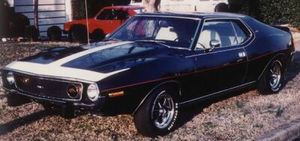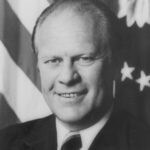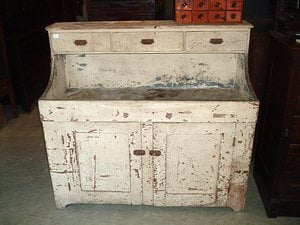The 1960’s will be remembered for a variety of reasons. However, for vehicle enthusiasts, perhaps one of the most important things to come out that decade was the advent of the pony car. For those who do not know, a pony car encompassed a very simple idea, by placing a large, high powered engine into a small, lightweight car body, a reasonably priced, high performance sports car could be produced. Perhaps one of the most famous, and earliest, examples of a pony car can be found in the Ford Mustang. However, even though it has not achieved the fame of the Ford Mustang, the AMC Javelin was a powerful car in it’s own right, and definitely one that deserves to be remembered for the significant role that it played in automotive history.
Although the Javelin is perhaps the most famous AMC vehicle (excluding the legendary AMX), the Javelin was not AMC’s first attempt at a pony car, or sports car. In fact, the first attempt was known as the “Marlin”, and it proved to be a failure for all involved. Even though the Marlin was billed as a sports car, and did contain a powerful engine, it was housed in a very large body, preventing the car from ever achieving any kind of significant history in terms of performance. Also, the Marlin resembled a much older generation of cars, and was simply not desired by the teenagers of the 1960’s.
After the failure of the Marlin, AMC knew that it was time for a change. Thus, a man named Richard Teague decided to change the face of the American Motor Company forever. Teague’s idea was fairly simple, yet revolutionarily at the same time. Teague designed two separate vehicles, one being a two door coupe, with bench back seats, and another being a two seat performance oriented sports car. The four door would be known as the Javelin, and would be mass marketed, whereas the two seat car would be known as the AMX Javelin, and would become legendary in the realm of muscle cars.
Despite the massive differences under the hood, both the Javelin and the AMX were similar in design and style. Both cars contained the sport back design, large hoods and recessed headlights. However, due to the fact that the AMX is missing back seats, the actual body is about a foot shorter, thus greatly reducing the overall weight of the car. After the initial design received support at a variety of auto shows, both the AMX and the Javelin were put into place for the 1968 production year.
The Javelin and the AMX were produced with a total of four different engine possibilities. The base Javelin model included a six cylinder engine with 232 inches of cubic displacement. Although a bit underpowered for the somewhat heavy four seat Javelin body, the engine managed to produce 145 horse power, putting it directly on par with other pony cars of the time. The AMX, on the other hand, was a completely different story. The AMX came with a choice of three eight-cylinder engines. The highest performance model included a V8 with 390 cubic inches of displacement. This monster engine put out 315 horse power, and was as legendary during it’s production as it is today.
However, despite the obvious power of the Javelin, it did not have quite the same success levels of other pony cars of the time. Although the AMX was highly desired, the steep price tag kept many potential buyers from closing the deal, and the normal Javelin simply did not have the features or the style to attract buyers. In fact during the first year of Javelin production, only a little over 50,000 vehicles were sold. Subsequent years of production would not increase the amount of sales for the Javelin. These numbers put it behind other cars at the time, even though they were not horrible sales by themselves.
Even though the Javelin does not have the sales record to beat other pony cars of the time, it definitely has the racing history to stand its own. The AMX, under drivers Mark Donohue and Roger Penske, took a grand total of 7 Trans Am series wins. The AMX even made it to the Trans Am Championship in 1971.
However, if 1971 marks a year of victory for the Javelin, than 1974 marks it’s year of defeat. With a looming oil crisis on the rise, and the inability of car manufacturers to keep producing gas consuming monsters, the Javelin would eventually fall by the wayside, making way for the economy cars of the late 1970’s and 1980’s. Although AMC would eventually find it’s place with the Pacer, one of the most important economy cars to ever hit the market, the Javelin was simply was not destined to achieve long lasting fame.
AMC itself would eventually fall by the wayside itself, selling it’s Jeep name to Chrysler.
Although AMC may not be the first thing that comes to mind when one thinks of sports car or muscle car, the Javelin nonetheless has reserved it’s place in automotive history. With the championship AMX car, and a popular, but fading, loyalty to the Javelin and other AMC cars, AMC will forever hold it’s place. The Javelin, likewise, will be remembered as a conceptual, fun, and interesting vehicle, without the sales numbers to keep it from fading to the automotive wayside.






